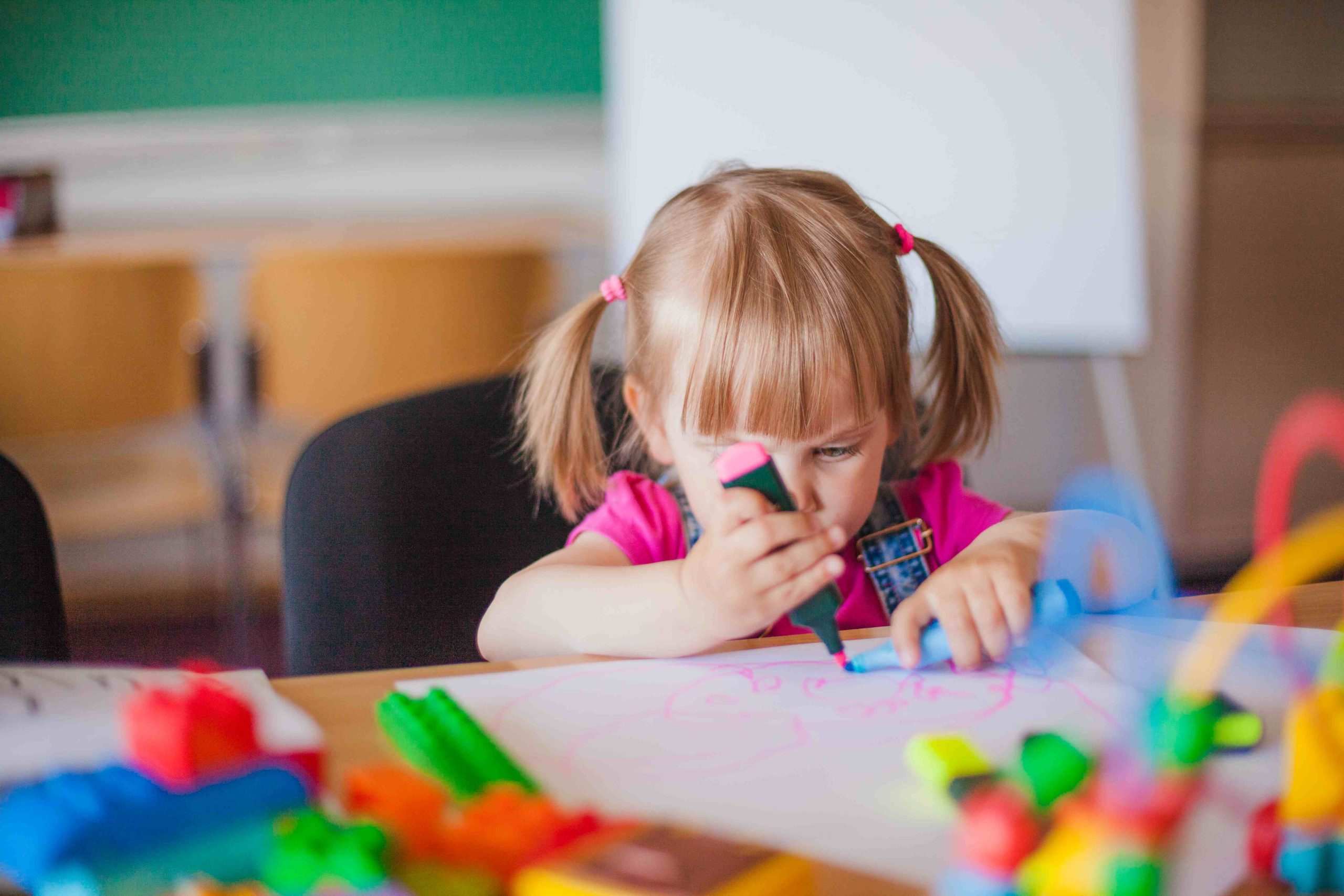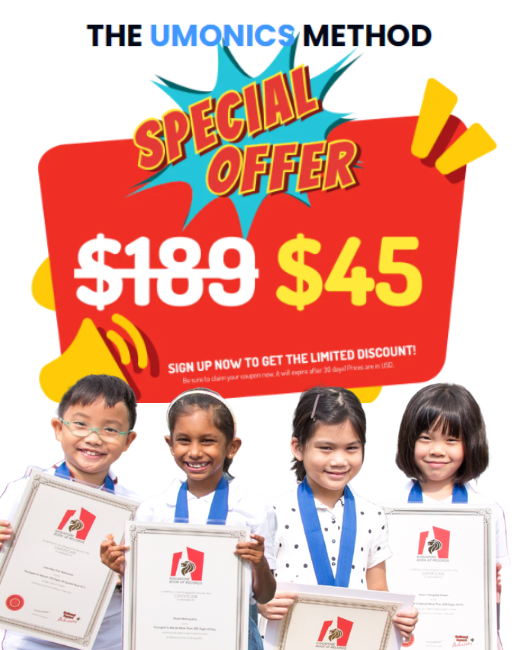
Unlocking the Power of Different Learning Styles for Preschoolers
Every preschooler is a unique individual, and their learning journey is shaped by their individual strengths, preferences, and learning styles. Recognizing and catering to these diverse learning styles is key to unlocking the full potential of preschoolers’ educational experiences. In this article, we delve into the world of different learning styles and explore how educators can create a nurturing and inclusive environment that embraces and supports the varied ways in which preschoolers learn and thrive.
Preschoolers possess a variety of learning styles, and understanding and accommodating these styles can enhance their learning outcomes and overall engagement. Here, we explore four common learning styles: visual, auditory, kinesthetic, and tactile. By tailoring teaching methods and materials to suit these styles, educators can create an inclusive and enriching learning environment for all preschoolers.
The Visual Learner’s Path to Understanding
Visual learners are individuals who grasp information best through visual aids and cues. They thrive on visual representations such as images, diagrams, and charts. For these preschoolers, incorporating visual materials into lessons and activities is essential. Educational posters, colorful flashcards, and graphic organizers can help them process and retain information effectively. Visual learners also benefit from visualizing concepts, using mind maps or concept maps, and engaging in visual storytelling. By providing visual tools and techniques, educators can empower visual learners to excel in their learning journey.
Embracing the Auditory Learner’s Melodies of Learning
Auditory learners absorb information most effectively through sound and spoken words. These preschoolers thrive in environments that provide opportunities for listening and verbal engagement. Educators can leverage audio resources, such as audiobooks, podcasts, and recorded lectures, to cater to the needs of auditory learners. Additionally, incorporating group discussions, oral presentations, and storytelling sessions can create a dynamic learning experience for these learners. By embracing the power of sound, educators can unlock the potential of auditory learners and foster their love for learning.
Kinesthetic Learning: Engaging the Body and Mind
Kinesthetic learners are “hands-on” learners who learn best through physical movement and interaction. These preschoolers benefit from activities that allow them to engage their bodies and senses. Incorporating manipulatives, such as building blocks, puzzles, and sensory bins, provides kinesthetic learners with opportunities to explore concepts through touch and movement. Role-playing, hands-on experiments, and interactive games are also effective strategies to engage kinesthetic learners. By encouraging physical interaction and active participation, educators can tap into the potential of kinesthetic learners and create a dynamic and immersive learning experience.
The Tactile Learner’s Journey of Discovery
Tactile learners have a strong preference for hands-on experiences and enjoy engaging their sense of touch. These preschoolers benefit from materials and activities that allow them to manipulate objects and explore textures. Providing opportunities for sensory play, such as sand and water play, clay modeling, and finger painting, stimulates the tactile learner’s senses and enhances their understanding of concepts. Incorporating textured materials, such as fabric swatches or textured cards, can also support their learning. By embracing tactile experiences, educators foster a rich and interactive learning environment for these learners.
Blended Learning: Embracing Diversity and Flexibility
In any preschool setting, it is crucial to recognize that preschoolers may exhibit a combination of learning styles. Blended learning approaches that incorporate various teaching methods and materials can cater to the diverse needs of preschoolers. By integrating visual aids, audio resources, hands-on activities, and tactile experiences, educators provide a well-rounded learning environment that addresses the strengths and preferences of different learners. Blended learning not only accommodates different learning styles but also fosters collaboration, critical thinking, and creativity among preschoolers.
Nurturing Individuality: Embracing Each Preschooler’s Learning Style
Every preschooler is unique, and their learning journey should be celebrated as such. Embracing and nurturing each preschooler’s learning style is crucial to their educational and personal development. By creating a classroom environment that appreciates and supports diverse learning styles, educators empower preschoolers to embrace their individuality, build confidence, and reach their full potential. Through personalized learning approaches, tailored materials, and differentiated instruction, educators can ensure that every preschooler’s learning style is valued and catered to.
Flexibility in Instructional Strategies
Flexibility in instructional strategies is crucial when catering to different learning styles among preschoolers. Educators should be open to adapting their teaching methods and approaches based on the individual needs and preferences of their students. This flexibility allows for a more personalized and tailored learning experience for each preschooler. By observing and assessing how preschoolers respond to different strategies, educators can make informed decisions on how to best engage and support their learning journey.
Creating Multisensory Experiences
Multisensory experiences are highly beneficial for preschoolers with diverse learning styles. Engaging multiple senses simultaneously enhances their understanding and retention of information. Educators can incorporate multisensory experiences by integrating visuals, sounds, movements, and tactile elements into lessons and activities. For example, using props, music, and movement during storytelling sessions can captivate the attention and engage the senses of preschoolers with different learning styles. By creating multisensory experiences, educators provide a holistic and immersive learning environment.
Individualized Learning Plans
To effectively address the diverse learning styles of preschoolers, individualized learning plans can be implemented. These plans consider each child’s unique strengths, preferences, and areas for growth. Educators collaborate with parents and use assessments and observations to identify the specific learning style of each preschooler. Based on this information, tailored strategies, materials, and activities are incorporated into their individualized learning plans. This approach ensures that each child receives the necessary support and opportunities to thrive academically and holistically.
Collaborative Learning Opportunities
Collaborative learning opportunities encourage preschoolers to learn from and with their peers, promoting a sense of community and fostering social-emotional growth. Group projects, discussions, and cooperative games provide platforms for preschoolers to share their ideas, perspectives, and knowledge. Through collaboration, children with different learning styles can benefit from the strengths of their peers, gaining new insights and developing important social skills. Educators facilitate and guide these collaborative activities to create a supportive and inclusive learning environment.
Celebrating Diversity and Individual Growth
Embracing different learning styles means celebrating the diversity within the classroom and valuing each child’s individual growth. Educators should create a culture of inclusivity where preschoolers feel empowered to embrace their unique strengths and learning preferences. By acknowledging and celebrating the achievements and progress of each child, educators cultivate a positive and supportive learning environment. This approach encourages preschoolers to take ownership of their learning and develop a growth mindset that fuels their continuous development.
Ongoing Professional Development for Educators
To effectively cater to different learning styles, educators must engage in ongoing professional development. By staying abreast of the latest research, methodologies, and instructional techniques, educators can continuously refine their teaching practices. Professional development opportunities can include workshops, conferences, online courses, and collaborative learning communities where educators can share insights and best practices. By investing in their professional growth, educators can enhance their ability to adapt and meet the diverse needs of preschoolers with various learning styles.
Parent Collaboration and Communication
Collaboration with parents is essential in supporting preschoolers’ diverse learning styles. Educators should establish open lines of communication with parents, fostering a partnership to better understand each child’s learning preferences and strengths. Regular parent-teacher meetings, progress reports, and parent education sessions can facilitate dialogue and enable educators to gain valuable insights from parents about their child’s learning style. By working together, educators and parents can create a cohesive approach to support each child’s individual needs.
Cultivating a Positive Learning Environment
A positive learning environment is critical for preschoolers with different learning styles to thrive. Educators should create a safe, inclusive, and supportive classroom atmosphere where children feel encouraged to express themselves and take risks in their learning. This can be achieved by promoting a growth mindset, providing constructive feedback, and fostering a sense of belonging. By creating a positive learning environment, educators empower preschoolers to embrace their unique learning styles and develop a love for learning that extends beyond the classroom.
Continuous Assessment and Reflection
Continuous assessment and reflection are essential components of effective teaching practices that cater to diverse learning styles. Educators should regularly assess preschoolers’ progress and reflect on the effectiveness of their instructional strategies. This can involve a variety of assessment methods, such as observations, portfolios, and informal assessments. By gathering data and reflecting on the outcomes, educators can make informed decisions about adapting their teaching approaches to better meet the needs of preschoolers with different learning styles.
Technology Integration
Incorporating technology can be a valuable tool for supporting different learning styles. Educational apps, interactive software, and online resources can provide customized learning experiences for preschoolers with varied preferences. Technology can offer visual representations, auditory cues, interactive simulations, and kinesthetic activities, catering to multiple learning styles simultaneously. However, it is essential to ensure that technology is used in a purposeful and balanced way, complementing hands-on and interactive experiences rather than replacing them.
Fostering Self-awareness and Self-advocacy
Fostering self-awareness and self-advocacy skills is crucial for preschoolers with different learning styles. Educators can empower preschoolers by helping them understand their own learning preferences and strengths. By encouraging preschoolers to reflect on how they learn best, educators can guide them in advocating for their needs and preferences in the learning environment. This self-awareness and self-advocacy foster independence and ownership of their learning journey, enabling preschoolers to actively engage in their education.
Creating a Multicultural and Inclusive Curriculum
Preschoolers come from diverse cultural backgrounds, and it is essential to create a multicultural and inclusive curriculum that respects and celebrates their differences. This includes incorporating diverse perspectives, traditions, and experiences into the curriculum materials and activities. By embracing multiculturalism, educators create an environment where all preschoolers feel represented and valued. This approach promotes acceptance, empathy, and a broader understanding of the world, allowing preschoolers to appreciate and learn from diverse learning styles and cultural perspectives.
Promoting Peer Collaboration and Mentoring
Peer collaboration and mentoring opportunities play a significant role in supporting preschoolers with different learning styles. By pairing preschoolers with diverse learning preferences, educators can foster collaboration and peer learning. This approach allows children to benefit from each other’s strengths and perspectives, building empathy, teamwork, and problem-solving skills. Peer mentoring programs, where older preschoolers mentor younger ones, also promote a sense of responsibility and support the growth and development of preschoolers with different learning styles.
Creating a Flexible Physical Environment
The physical environment of the classroom can significantly impact preschoolers’ learning experiences. To accommodate different learning styles, educators should create a flexible physical environment that allows for various types of learning and movement. Providing different learning zones, such as quiet areas for individual work, collaborative spaces for group activities, and hands-on stations for tactile exploration, allows preschoolers to choose the environment that best suits their learning preferences. Flexible seating options, such as bean bags, floor cushions, and standing desks, also cater to the needs of kinesthetic learners.
Supportive Emotional Well-being
Emotional well-being is vital for preschoolers to thrive in their learning journey. Educators should create a supportive and nurturing environment that addresses the social and emotional needs of preschoolers with different learning styles. This can include implementing mindfulness activities, teaching emotional regulation techniques, and fostering positive peer relationships. By promoting a positive emotional climate, educators help preschoolers feel safe, confident, and ready to engage in their learning, regardless of their learning style.
Collaboration with Specialized Support Professionals
In some cases, preschoolers with specific learning needs or disabilities may require additional support. Collaboration with specialized support professionals, such as special education teachers, speech therapists, or occupational therapists, can be instrumental in catering to their unique learning styles. These professionals bring specialized knowledge and strategies to the classroom, working closely with educators to develop individualized interventions and accommodations. By fostering collaboration with specialized support professionals, educators can ensure that all preschoolers receive the necessary support to reach their full potential.
Building Positive Relationships
Building positive relationships with preschoolers is fundamental in supporting their diverse learning styles. When educators establish trusting and respectful relationships, preschoolers feel comfortable expressing their needs, preferences, and challenges. By actively listening and demonstrating empathy, educators can better understand the individual learning styles of each child. These positive relationships create a supportive and nurturing atmosphere where preschoolers feel valued and motivated to engage in their learning.
Providing Opportunities for Exploration and Creativity
Preschoolers with different learning styles thrive when given opportunities for exploration and creativity. Educators should provide open-ended activities and materials that allow preschoolers to experiment, problem-solve, and express their creativity. Art stations, building blocks, sensory play areas, and nature exploration zones are examples of spaces where preschoolers can engage their senses and explore their interests. These activities stimulate the imagination and provide avenues for preschoolers to learn and express themselves according to their individual learning styles.


